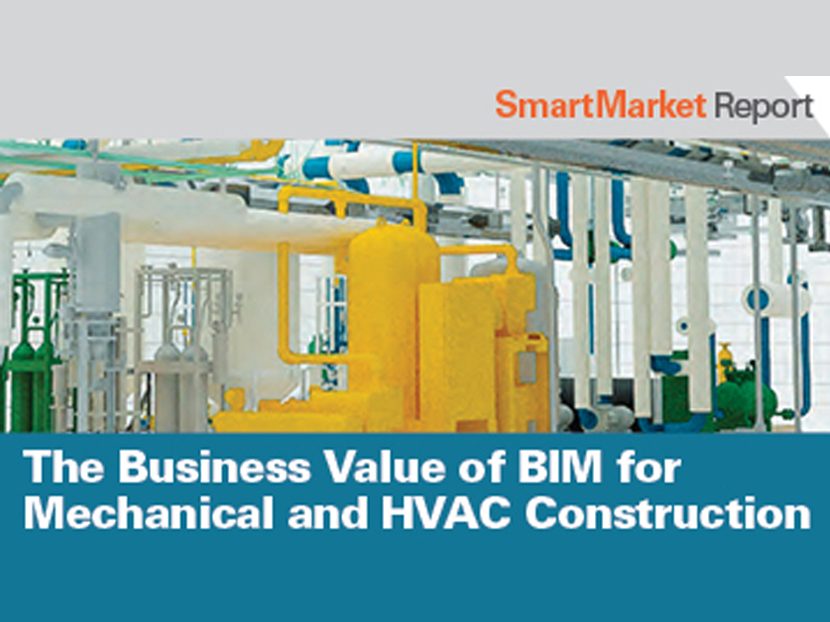Report: High Degree of BIM Use by Mechanical Contractors Leads to Multiple Benefits

A new study of mechanical and HVAC contractors using BIM reveals the degree to which these contractors are engaged with BIM, the benefits that they experience from its use and the challenges they face in expanding the use of BIM. The Business Value of BIM for Mechanical and HVAC Construction SmartMarket Report, released by Dodge Data & Analytics in partnership with the Mechanical Contractors Association of America (MCAA) and Pinnacle Infotech, and with the support of Autodesk, The Air Conditioning & Mechanical Contractors' Association (AMCA) and Innovative Construction Technology, demonstrates that mechanical contractors are sophisticated users of BIM software who have seen the benefits from that use. However, the study also demonstrates that the ability of these contractors to fully leverage the value of modeling technologies is hampered by training and manpower issues, along with the challenge of getting other project stakeholders equally engaged in BIM.
"Virtual construction has come a long way in a very short time," said Scott Pittman, vice president of Pinnacle Infotech Inc. "The days of the chalk line and paper documents are decreasing and we are seeing more laser scanners and layout tools to help with modular construction and pre-manufactured assemblies."
One of the biggest benefits reported by contractors is the ability of BIM to improve the fabrication process. Many mechanical contractors are frequent users of offsite fabrication for their systems, and the study shows that nearly half use BIM on 50 percent or more of the assemblies they prefabricate, demonstrating that BIM is an essential tool for this process. Benefits from using BIM to aid prefabrication are widely reported, with more than 80 percent of mechanical contractors who use it to prefabricate reporting that they see improvements in the material waste generated, labor costs, quality of installed work, avoiding the purchase of extra pipes and fittings and schedule performance.
Other top benefits reported by contractors using BIM in general are increased labor productivity, increased profitability, better utilization of resources and improved cost performance.
"BIM is an increasingly important and incredibly complex part of the building process," said Sean McGuire, director, Innovative Technologies, at MCAA. "It requires additional coordination, planning, and design expertise, and MCAA members are embracing the tools and technology to rise to the challenge. This new process is still in its infancy, and mechanical contractors—especially those that are already using BIM—have a lot to learn from this report."
By using BIM, mechanical contractors have also been able to leverage the technology to conduct more analysis on their projects.
- More than 70 percent report that they use BIM for shop drawings and spatial coordination on half or more of their projects.
- Nearly two-thirds (61 percent) report using BIM for constructability evaluation on more than half of their projects.
"Use of BIM for spatial coordination and constructability evaluation provides these contractors with a clear advantage," said Steve Jones, senior director of industry insights at Dodge Data & Analytics. "They can address issues before construction begins, which saves both time and money, and can even help improve safety by avoiding rework."
However, there are still challenges that prevent these contractors from fully leveraging the use of BIM. The biggest challenges include training needs for employees and lack of available manpower to create BIM models. In addition, these contractors struggle with full engagement with BIM across the project team, with lack of support for BIM from other important trades, the issue of other stakeholders on their projects not using BIM and poor quality BIM use by other stakeholders also presenting significant challenges. Addressing these issues will allow even more contractors to more fully experience the benefits of using BIM collaboratively on their projects.
To learn more, The Business Value of BIM for Mechanical and HVAC Construction SmartMarket Report is available for free download at www.construction.com/toolkit/reports.




